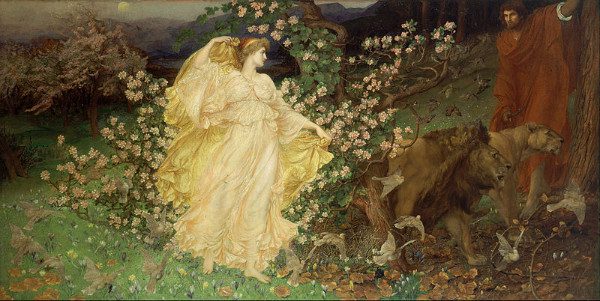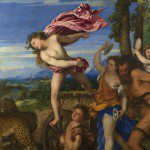Gleb Botkin (1900-1969)
Most American Pagans don’t look at May 6 1938 as a monumental day, but in many ways it was. That was the date a Russian immigrant to the United States named Gleb Botkin obtained legal status for his church, the first legal Pagan church in American history. Botkin’s Church of Aphrodite never attracted a large following, but looking back on it today it feels pretty revolutionary. (A judge at the New York State Supreme Court said on the record that Botkin’s church was “better than worshipping Mary Baker Eddy” the founder of Christian Science.)
Botkin’s life reads like a Hollywood screenplay. His father was the personal physician of Czar Nicholas II and his family (you might know the name of one of Nichola’s daughters, Anastasia), and was murdered right alongside his patients by the Bolsheviks. During the Russian Revolution Gleb Botkin hid out at a Russian monastery before moving to Japan, France, and finally the United States. Upon entering the States Botkin proceeded to make his way through life as an illustrator and novelist.

Many of his novels reference the power of female deity and the ideas found in books like Immortal Woman, The Woman Who Rose Again, and Her Wanton Majesty would later show up in his church dedicated to Aphrodite. While many of Botkin’s odes to Aphrodite are beautiful and still resonate today, some of his ideas don’t really fit into the Pagan mainstream. Botkin’s version of Paganism was monotheistic; he saw Aphrodite as the one and only deity in the Universe. He was also a staunch anti-Communist.
Botkin did have a pretty progressive attitude towards sex. He saw sexual union as sacred, and blamed the Christian Church for devaluing it and treating women as second class citizens. He wasn’t polyamorous (the term didn’t exist yet!) but wasn’t a fan of monotheism. One of the members of his church would later go on to be a part of Feraferia.
Edward “Ed” Fitch (1937-now)
Though no one has ever credited Ed Fitch with creating Eclectic Wicca, he sort of deserves credit for creating Eclectic Wicca. Up until the 1970’s, to practice Wiccan-Witchcraft one had to be an initiate, but that all changed due to Ed Fitch. He was one of the early architects of what we in initiatory Witchcraft call the “Outer Court.” An Outer Court is a Witch circle, but one that doesn’t betray oathbound secrets. Fitch created a system with recognizable Witch rituals that could be practiced in public and by anyone.
In the 1960’s while stationed overseas in the military Fitch began work on the first Outer Court material ever assembled. Those two books The Grimoire of the Shadows and The Outer Court Book of Shadows circulated freely in the Pagan underground of the 1970’s, with most people unaware of just who wrote them. They were later collected and printed by Llewellyn in 1996 as A Grimoire of Shadows, with Fitch’s name on the cover.
With Joseph Wilson and Thomas Giles, Fitch helped to create The Pagan Way, an open Pagan system nominally based on Gardnerian Witchcraft. Pagan Way materials gave people a way into the Pagan movement without having to find a coven to initiate them and helped to spread Paganism and the Craft across the continent. Eventually the Pagan Way developed into its own tradition, and there are still covens and groups today that can trace their origin to it. Much of the original Pagan Way material eventually ended up in A Book of Pagan Rituals (attributed to Herman Slater) and Magical Rites From the Crystal Well by Fitch and writer Janine Renee.
___
Notes:
You’ll notice I didn’t foot note this article, that’s because it comes from a set of lecture notes I’ve been writing and adding to since 2012. My primary sources for each profile in this article were:
Long, Carolyn Morrow. A New Orleans Voudou Priestess: The Legend and Reality of Marie Laveau, University Press of Florida, 2007.
Deveney, John Patrick. Paschal Beverly Randolph: A Nineteenth-Century Black American Spiritualist, Rosicrucian, and Sex Magician, SUNY Press, 1996.
Adler, Margot. Drawing Down the Moon, Beacon Press, 1979.
Clifton, Chas. Her Hidden Children: The Rise of Wicca and Paganism in America, AltaMira Press, 2006.


















